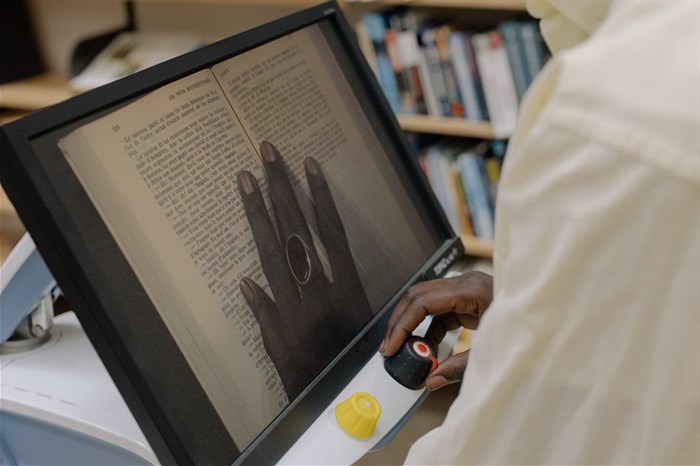
Subscribe & Follow
The invaluable role of machine vision in automation

Machine vision is a class of technologies that process information from visual inputs such as images, documents, computer screens, videos and more. Its value in automation lies in its ability to capture and process large quantities of documents, images and video quickly and efficiently in quantities and speeds far in excess of human capability. Machine vision usually works with other advanced technologies, including natural language processing, RPA, AI and machine learning, to deliver automation’s impact on business operations. Machine vision is the eyes of automation, AI and machine learning are the brains and RPA is the backbone you hang these technologies onto to leverage them in automation.
Capitalising on business opportunities
Automation adoption has accelerated in recent years, becoming essential for businesses to remain competitive across industries. While organisations are prioritising these investments, they are also facing increasing cost pressures, with the aftershocks of the pandemic, supply chain disruptions and geopolitical events all spiking the prices for essential materials, products and services. Documents, images and computer screen-based information are obliquitous elements of the work organisations need to do. Because of this, the use of computer vision has exploded because a significant percentage of front and back-office processes involve dealing with visual information whether that be documents, video or objects like text boxes, scroll bars or buttons on screens. In many businesses, if you want to automate at scale, you will probably have to process image data of one form or another at scale as well.
One of the most common uses of machine vision in automation is in document processing. Machine vision combined with machine learning are the active ingredients of what is referred to as intelligent document processing (IDP): automatically processing and classifying documents, extracting printed or handwritten data and then deciphering the content for further automated processing.
IDP is particularly useful when automating document qualities at scale. For example, the technology is transforming traditionally paper-heavy and process-driven sectors, like the financial services industry – by minimising the need for people to be involved in certain processes that might typically have required extracting data from large numbers of documents. Even during the peak of the pandemic in 2020, when most were relying on screens and working from home, an estimated 2.8 trillion pages of paper were printed. Companies are also collectively spending billions on annual wages for data entry.
Machine vision automation is not just about scale, though – it’s about accuracy and improving the work humans do as well. The tedious repetitiveness of these tasks contributes to significant error rates and leads to low satisfaction and high levels of turnover, particularly when dealing with handwritten documents which are processable with IDP.
Insurance administrators need no longer devote their days to manually digitising paper applications; banking clerks don’t have to manually enter customer information or spreadsheet data into databases; brokers can avoid the additional work that arises from the errors that can occur when processing high volumes of transactions under strict daily deadlines. By filtering machine vison extracted data inputs through machine learning and AI based technologies, the speed, accuracy and organisation of processing needed to embrace automation technologies can be realised.
The sophistication of how computer vision is applied in autonomation is not limited to document processing. Video based facial recognition in security processes, checkout-less supermarkets and remote equipment identification via drones for inventory management are examples of how computer vision is being leveraged in automation.
Machine vision based technologies are even becoming central to the creation of automations themselves. For example, instead of relying on human workers to describe processes that are being automated when designing automations, recordings of the process to be automated are created and then machine vision software, combined with other technologies, is used to capture the process end-to-end and then provide the input to automating a lot of the work needed to program the digital workers (bots).
Ensuring accuracy and leaving collaboration with humans in the loop
Standards of accuracy and bias are a concern cited by organisations when it comes to relying on artificial solutions to undertake certain processes. This is why it’s important to have the right processes in place for each application to ensure the best outcome. For automated document processing measures that loop in human workers when uncertainties arise are common. Just like some oversight is needed for humans undertaking processes, that diligence should be applied to digital workers as well.
Conversely, machine vision and AI are also used to QA human-based processes. In healthcare, automated second opinions of radiology-based diagnoses are increasing in use. This is partly because it reduces the time and cost it takes to process second opinions but also because in a growing number of areas, machine vision/AI based processing of radiology images is more accurate than humans.
Human in the loop (or automation in the loop) avoids the issue of relying solely on technology or humans in areas with critical consequences, whilst allowing humans to utilise the statistically more efficient and accurate capacities of automation technologies. Human healthcare workers are then able to effectively attend more resource to more patients by reaping the benefits of human-digital collaboration. This is the real driver of automation in healthcare – the realization that every cost saved in administration and clinical processes is cost that can be allocated to improving patient care. It goes without saying that healthcare is one of the most enthusiastic adopters of automation today.
The future of work is agile and machine vision facilitates this, adding more intelligence to intelligent automation. This technology allows digital workers to interact with screens, documents and video like humans do, which is the big breakthrough. Ultimately, a more fulfilled and satisfied workforce, along with a more competitive and profitable business, are achieved.
Endless possibilities and opportunities
Machine vision is integral to maximising the impact of advanced automation technologies on business operations and paving the way for increased capabilities in the automation space. Self-driving cars are not too far off and demonstrate how machine vision is being pushed to it furthest capabilities.
We speak a lot about empowering employees to do more fulfilling work; as we move forward, it’s going to be about giving people the opportunity to live more fulfilling lives in and outside work. Not only can machine vision unlock more opportunity for people to thrive, but it can also enable businesses to successfully navigate an evolving landscape, reduce costs and increase efficiencies – no matter what challenges and uncertainties lie ahead.















